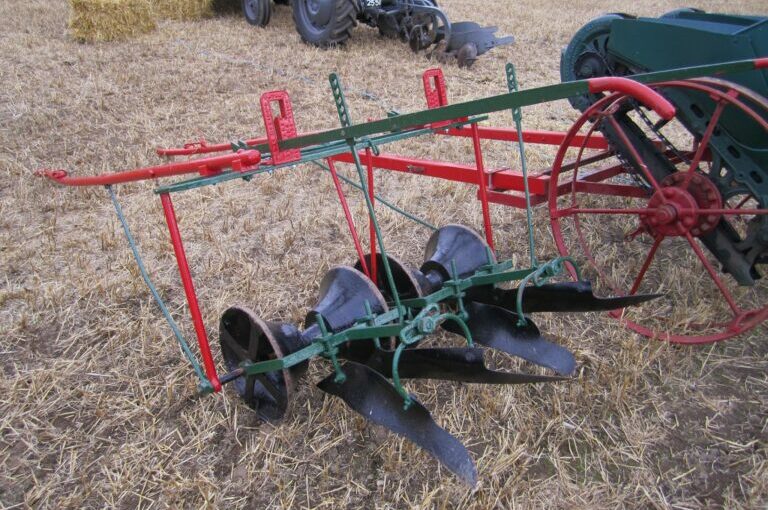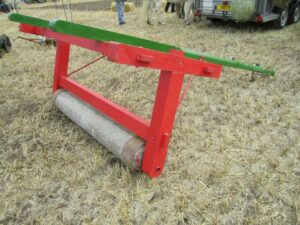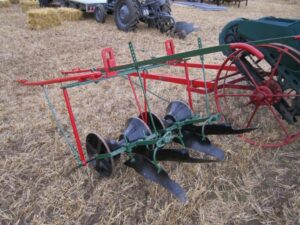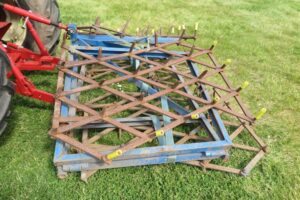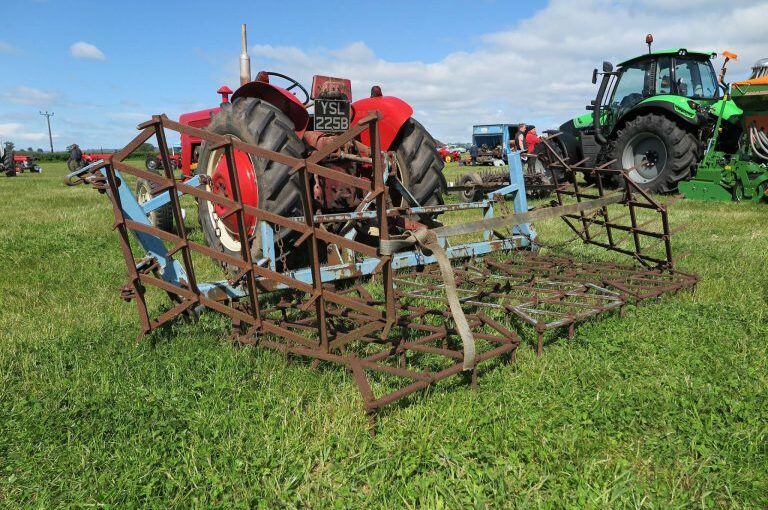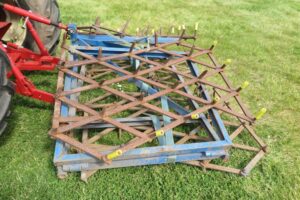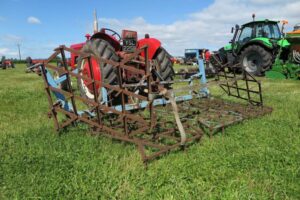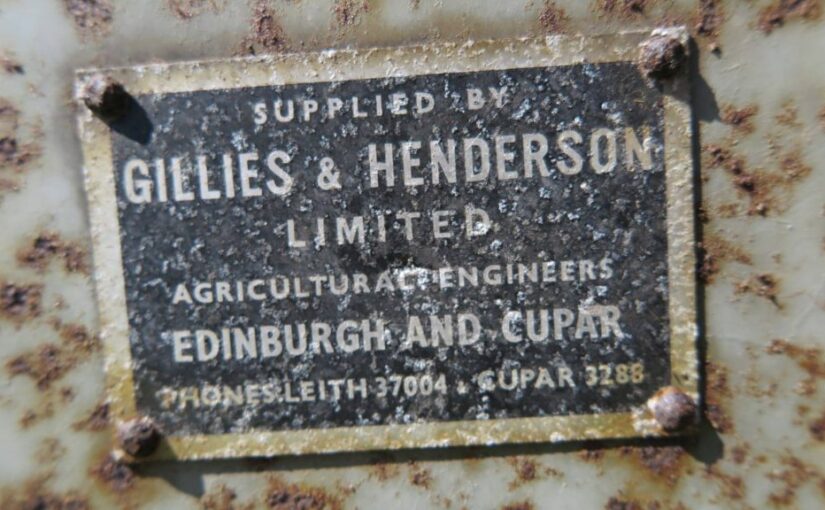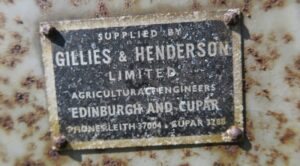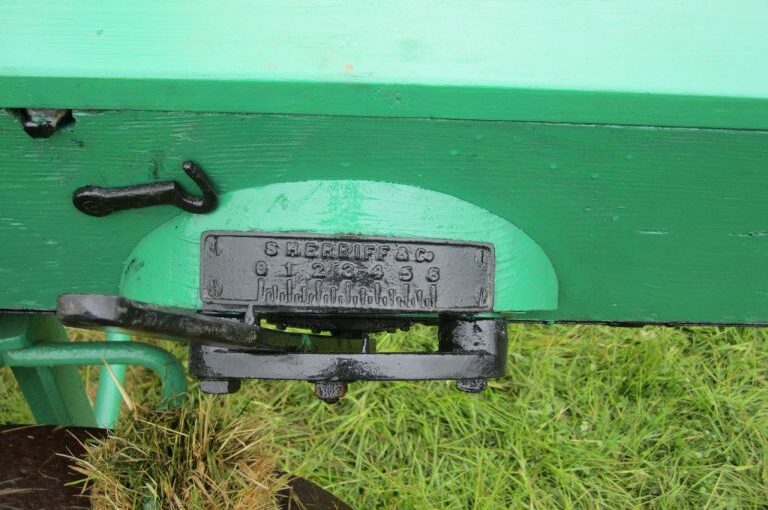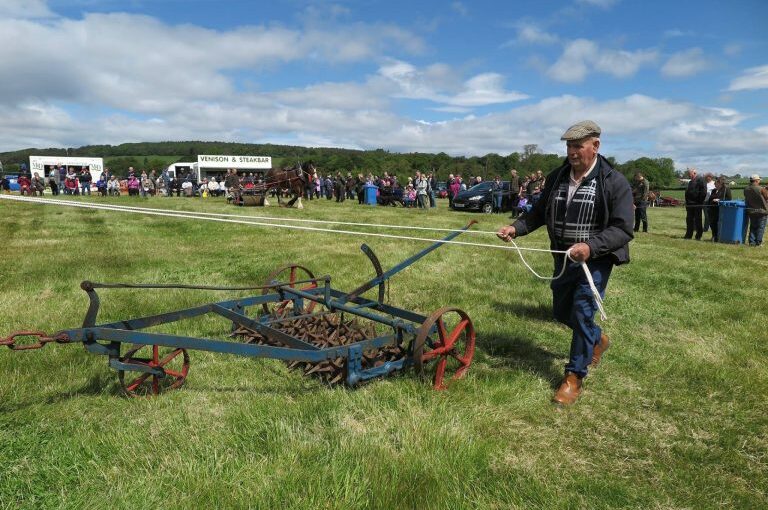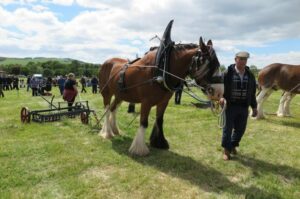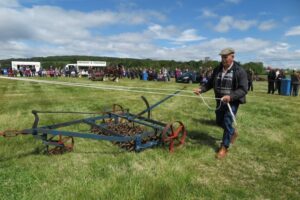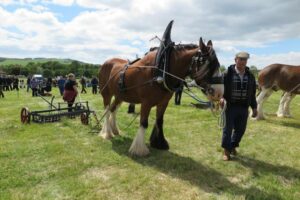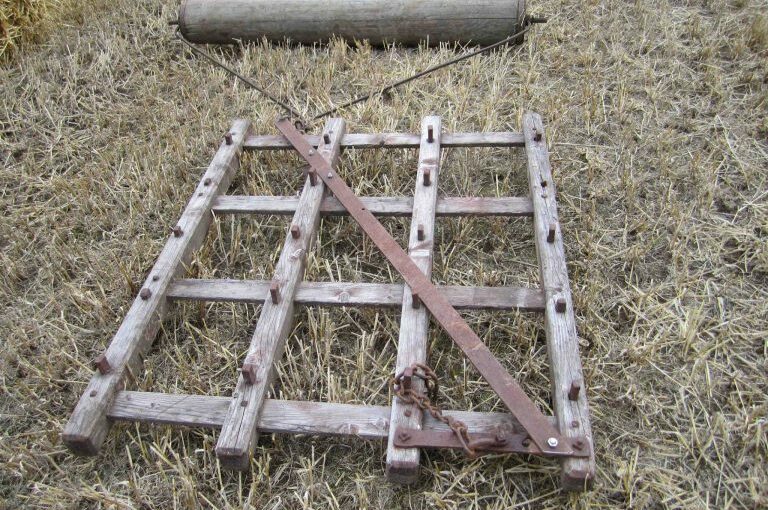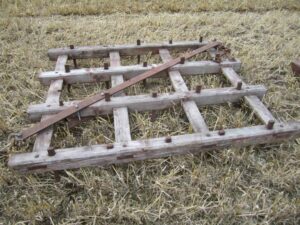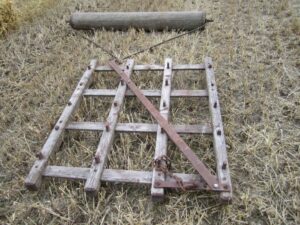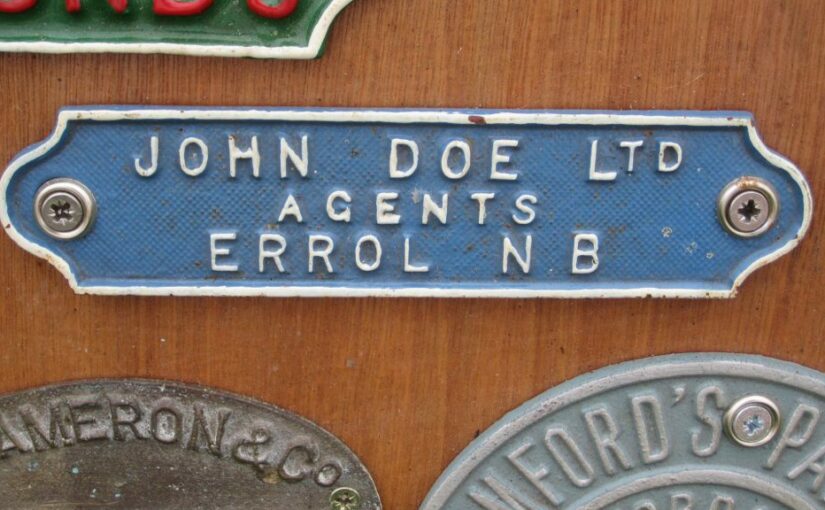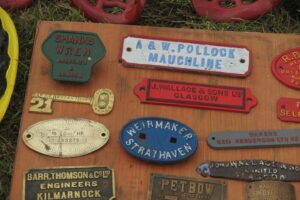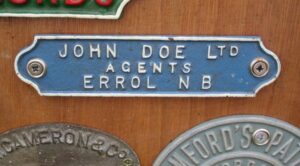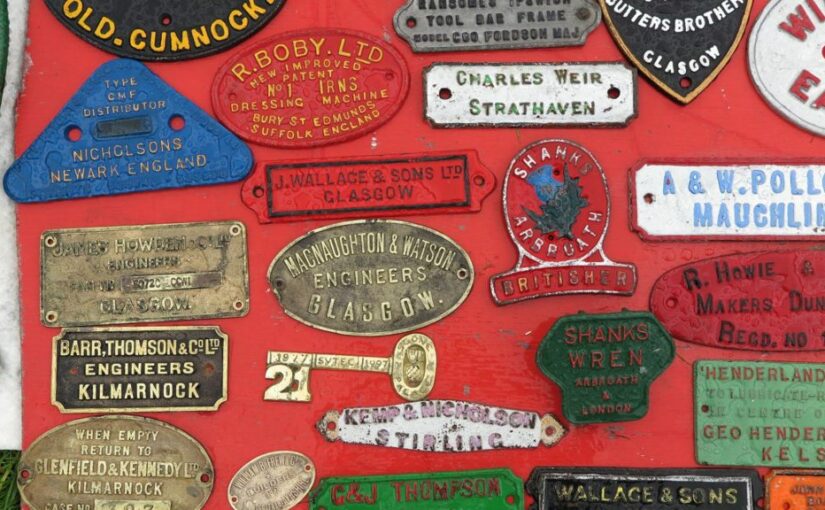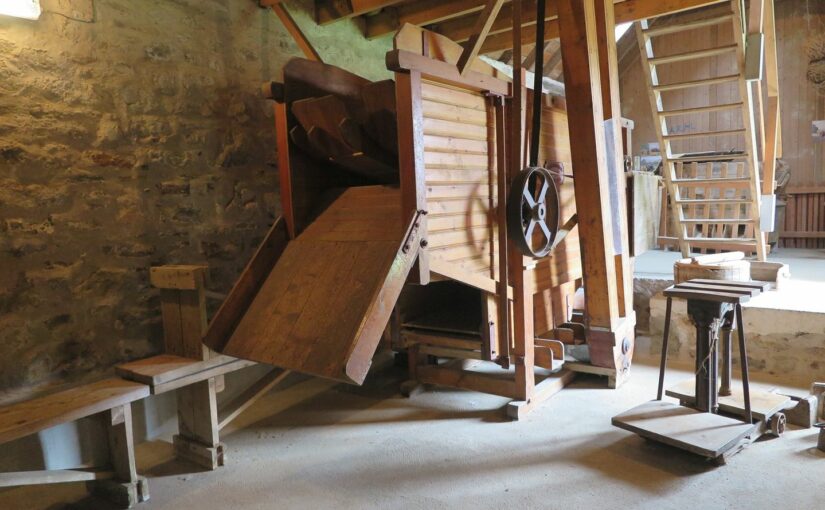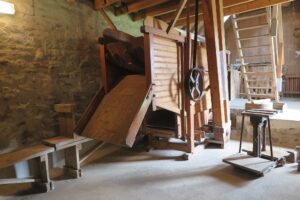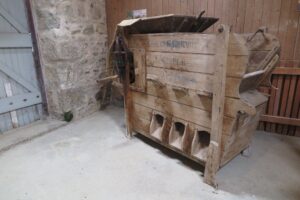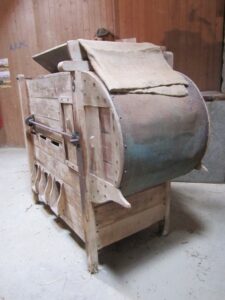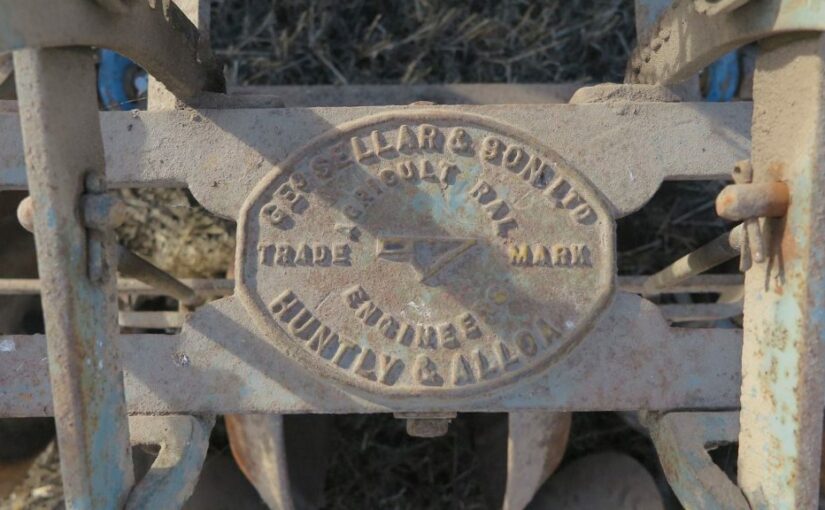What implements and machines were Scottish farmers using in 1933?
Displenishing sale notices provide evidence of what implements and machines were present (and used) on specific farms at a point in time. While the reflect the individual circumstances of the farm, in terms of size, animal and plant husbandry, they also reflect the preferences of the farmer in terms of innovation and makers.
They are useful for looking across a number of different types of technologies as well as farming activities. This includes spring cultivation work, whether for sowing grain crops, grass, turnip and other crops and potatoes.
By 1933 the emphasis of spring work was to use a range of implements to break down the clods and lumps in the soil to make a fine tilth for a seed bed and to ensure that the seed was covered. In essence, the soil continued to be worked over and over and moved around.
The following displenishing sale notices record the implements used to work the land for spring crops. Note the multiple numbers on some farms as well as their range. This also includes a range of sowing implements including drills and barrows.
The Scotsman, 4 November 1933
Monteith Houses, Gorebridge (J. Rodger)
Corn drill, broadcast barrow, manure barrow, D.D. manure distributor, turnip barrow, scarifier, 2 D grubbers, 3 single grubbers, brake harrow, 5 sets harrows, 3 rollers.
The Scotsman, 4 November 1933
Woodcote Mains, Blackshiels
Manure barrow, corn drill, broadcast barrow, turnip barrow, 5 ploughs, 2 D grubbers, 3 sets grubbers, 3 sets harrows, 3 rollers.
The Scotsman, 11 November 1933
Dalhousie Mains Farm, Bonnyrigg (J & J Marshall Ltd)
2 drill ploughs, Hunter hoe, 5 drill grubbers, disc scarifier, saddle harrows, 3 sets iron harrows, 2 land rollers, 2 stone rollers, Cambridge roller, double manure drill, turnip barrow, grass-seed barrow, Hoosier corn drill, Newlands cultivator.
The Scotsman, 11 November 1933
Malcolmstone Home Farm, Currie
Double drill and manure sower, grass seed sowing machine, corn drill, cultivator, Norwegian harrow, Cambridge roller, 2 land rollers, potato planter, Parimeter harrows, chain harrows, 4 sets iron harrows, set grass-seed harrows, 3-horse grubber, 3 sets single horse drill grubbers, 4 swing ploughs, 2 DF ploughs, scarifier, 3 sets single horse drill grubbers, drill harrows.
The Scotsman, 11 November 1933
Harlaw, Balerno (James Sloan)
Double drill and manure sower, broadcast manure barrow, 3 Dux ploughs, double furrow Dux plough, drill plough with marker, three horse grubber, 2 drill grubbers, 4 sets harrows, set grass seed harrows, set circle harrows, potato harrow, set chain harrows, drill scarifier, 3 rollers, turnip sowing machine.
The Scotsman, 11 November 1933
Mavishall, Humbie (W. Barr)
Corn drill, broadcast sowing machine, turnip seed sowing machine, manure distributor, 3 swing ploughs, 3 drill ploughs, 3 sets English harrows, set chain harrows, set saddle harrows, “Martin” cultivator, spring-toothed cultivator, scarifier, heavy grubber, 4 drill grubbers, 2 metal rollers, drill roller, rig marker.
The Scotsman, 22 November 1933
Kippielaw (Dalkeith) (Mrs Dods) Hosier corn drill, manure barrow, turnip barrow, tractor disc harrows, grass seed barrow, rollers, 3 cultivators, 5 grubbers, 7 sets harrows.
The Scotsman, 22 November 1933
Pressmennan, Dunbar
“Sherriff” grain drill, “Sherriff” broadcast seed sowing machine, turnip seed sowing machine, double driller and manure sower, combined beet machine, manure distributor, 2 drill ploughs, rig marker, 4 sets diamond harrows, 2 sets grass seed harrows, set Parmitter harrows, scarifier, clod rubber, harrow slipe, 2 barley grubbers, 2 “Finlayson” grubbers, 6 drill grubbers, 2 metal rollers, 2 drill rollers, Cambridge rollers, 2000 potato sprouting boxes.
The Scotsman, 22 November 1933
Haughhead Farm, Balerno (Thomas Wardlaw)
Land roller, manure barrow (new), turnip barrow, drill plough, 5 sets harrows, grubber.
The Scotsman, 22 November 1933
Ayton Mains, Ayton (M. L. Kirkwood)
Double drill and manure sower, potato and drill ploughs, Martin’s cultivators, ribber, broadcast, manure barrow.
